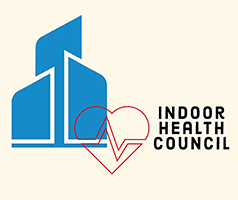Answers to Carpet Cleaning Questions
by Tawsha Stanford, President, Modern Clean, Eagle Idaho
Question One: How do carpet cleaning techniques impact a facility’s IAQ?
Removing soil from carpet through hot water extraction (HWE) prevents it from becoming airborne.
Still, unfiltered exhaust from HWE machines may pump small particles into the air, and some HWE machines have final HEPA filters to help trap particles and prevent IAQ issues.
HWE may add to indoor pollution when it introduces chemicals such as those containing VOCs, or residue on fibers which later gets airborne when carpet is walked on or vacuumed.
Proper drying of carpet helps prevent bacterial and mold growth with related odor, allergens, and Microbial VOCs (MVOCs) produced by fungi and bacteria.
Interim methods such as encapsulation use less water and are generally faster, though not a substitute for periodic HWE deep cleaning.
Some cleaning chemicals increase the rate of resoiling having an indirect but real impact on soil buildup that may become airborne.
The Carpet and Rug Institute (CRI) tests and certifies carpet cleaning systems for soil removal, water removal, texture/appearance retention, rate of resoiling, pH and other factors.
2. Can improper or perhaps too infrequent cleaning leave contaminants, including VOCs and allergens, in carpet that can then get released into the air?
Carpet has been called a “sink” for soils and dusts. Emptying the sink through regular cleaning helps. Letting the sink overflow from not enough cleaning will harm IAQ.
3. What cleaning methods do you recommend for improving IAQ in a facility?
Dry vacuum frequently, especially before all interim and deep cleaning. HEPA filters are a plus, but it’s more important that the vacuum as a system is low emitting (e.g., some of the vacuums certified by CRI have HEPA filters but some don’t).
4. How do these methods ensure good results?
Consistent application of methods makes all the difference. Clean carpet is an asset while dirty carpet is a liability. Focusing on the 80/20 rule in setting up maintenance is key (focus on the 20% of areas that get 80% of the traffic). Still, all carpet should be vacuumed regularly.
5. Are there cleaning methods that will minimize the trapping of pollutants in carpet fibers?
Vacuum, Vacuum, Vacuum. It’s the first and best line of defense, second is periodic interim and deep cleaning.
6. Do cleaning professionals consider the design/layout of the spaces they are cleaning—especially concerning ventilation in the facility/spaces—when planning their cleaning routines?
Mapping or diagramming the space and/or color-coding high traffic spots for task assignment/cleaning scheduling is key, as is ensuring good ventilation during and after cleaning. Ventilation not only removes or dilutes airborne pollutants but helps in drying carpet.
7. Does the schedule of cleanings matter?
Yes. A practical schedule and wise assignment of resources is part of a real and purposeful plan.
8. How does foot traffic affect long-term carpet quality and the ability to fully address VOCs and other contaminants?
The buildings would remain clean if we could keep the people out (ha, ha)! Practically speaking, large and well-maintained entry matting helps reduce the need for cleaning, equipment and chemicals that may affect IAQ.
9. Does climate/weather affect how you plan for carpet cleaning? (For example: facilities in a dry climate like the southwest USA versus facilities in New England, that will regularly see snowy and muddy conditions.)
Yes. Tracked-in deicer compounds, dirty snow/water and mud increase the need for entry maintenance, vacuuming, interim care and deep extraction; ditto for areas with sandy or clay-containing soils.
10. Concerning the equipment used, how often should onboard filters be changed, cleaned, or replaced?
It depends. During the initial vacuuming and cleaning of carpet previously neglected, the filters will load quickly possibly requiring several change-outs in short order. Once soil levels stabilize, a realistic filter cleaning or replacement schedule is often weekly to bi-weekly, depending on traffic.
11. Is it more efficient to use disposable or reusable filters?
Disposable is often better, but it depends on the filter media. Some machines are equipped with washable “HEPA” filters, and while these may not deliver true HEPA removal (99.97% of .3 micron and larger soil) they may suffice as an affordable and practical substitute.
12. Would these decisions be dependent on type of facility, amount of foot traffic, and weather/climate, or not?
Yes, and this demonstrates the complexity of factors and why professional cleaning is important.
13. What impact do cleaning chemicals have on IAQ? Are “green” chemicals worth the investment?
The impact can be significant depending on the formulation. EPA’s SaferChoice program offers a number of options in carpet cleaning solutions that are better for people, planet, and business.
14. Should cleaners consider hot water extraction and forgo the use of cleaning chemicals?
It depends on the soil. Water is the best solvent on Earth, hot water is even better, and High Flow Fluid Extraction (HFFE) using just hot water can be effective on water-soluble soils. Still, removing sticky and oily soils found in most carpets will require some “chemistry”.




